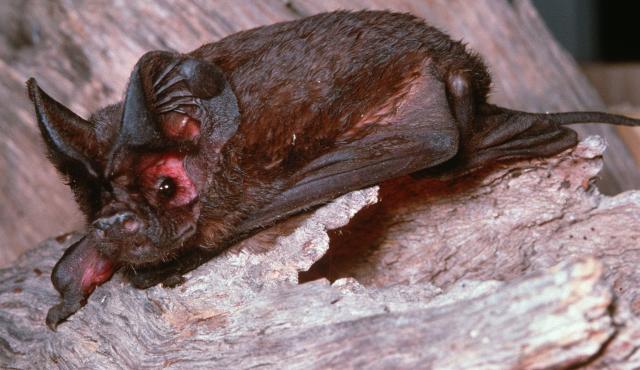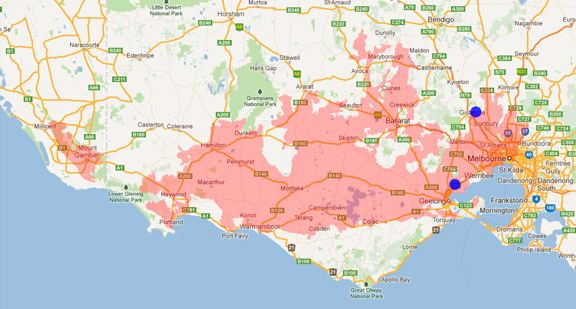A range of teacher professional learning programs will be developed to accompany the Biodiversity of the Western Volcanic Plains online outreach...

White-striped Freetail Bat
Tadarida australis
Roosts under peeling bark and in tree hollows. Females form colonies of approximately 20 while males roost alone or in small groups. Hibernation occurs over winter. One or two young are born in October-November. They forage below the canopy amongst vegetation.
| Details | Description |
| Type | Mammal |
| Group | Placental |
| Identifying Characteristics | |
| Distinctive Markings | A distinct white stripe of fur occurs along each side of the body under the wings. May also have white patches on the chest. |
| Diet | Carnivore. Moths, bugs, grasshoppers, ants and non-flying beetles. |
| Habitat | Grasslands, forests, woodland, shrubland and urban areas. |
| Native Status | Native to Australia |
| Sounds | The echolocation call is an audible metallic "ting-ting-ting", heard at night. |
| Taxonomy | |
| Phylum | Chordata |
| Class | Mammalia |
| Order | Chiroptera |
| Family | Molossidae |
| Genus | Tadarida |
| Species | australis |

Distribution maps indicate current and historic locations where species have been sighted.
Source: Atlas of Living Australia
| Conservation Status | |
| DEPI Advisory List | Not listed |
| FFG Act | Not listed |
| EPBC Act | Not listed |
The conservation status of species is listed within Victoria and Australia.
The Department of Environment and Primary Industry (DEPI) Advisory List consists of non-statutory advisory lists of rare or threatened flora and fauna within Victoria.
The Flora and Fauna Guarantee Act 1988 (FFG Act) lists threatened species in Victoria. Under the Act, an Action Statement is produced for each listed species.
The Environment Protection and Biodiversity Conservation Act 1999 (EPBC Act) is the Australian Government’s key piece of environmental legislation, listing nationally threatened native species and ecological communities.



